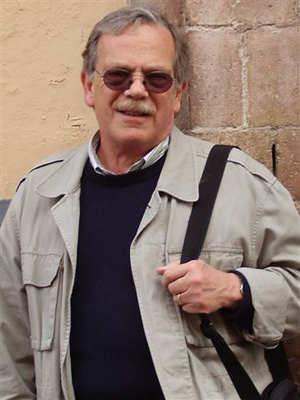Historian Wins 2011 Guggenheim
Inga Kiderra | May 2, 2011

Eric Van Young, professor of history at UC San Diego
Eric Van Young, professor of history at UC San Diego and a specialist in the history of colonial Mexico, has won a Guggenheim Fellowship for 2011-12.
Awarded by the John Simon Guggenheim Memorial Foundation and often characterized as “midcareer” awards, the prestigious fellowships support scholars and artists who have already demonstrated “exceptional capacity.”
In the annual competition’s 87th year for the United States and Canada, Van Young was one of 180 successful candidates, selected from a group of some 3,000 applicants. His fellowship-winning project is a book in progress titled “Lucas Alaman and Mexico: A Life Together,1792-1853.”
Mexico’s Alaman has often been compared to Thomas Jefferson and Alexander Hamilton in the fledgling United States. A founder of the Mexican Conservative Party, he is, in the words of Van Young, “one of those 19th-century polymaths—statesman, entrepreneur, political thinker, historian, journalist, botanist, mining engineer—whose career would be impossible to replicate now.”
Van Young has been working on Alaman’s biography for about 10 years, he said, primarily from archival sources in Mexico, first becoming intrigued with him during his previous project on Mexican Independence. (Alaman authored a magisterial, five-volume history of the independence movement.)
What drew him to Alaman’s story, he said, is “his rather schizoid image in Mexican history: sort of sinister, but also very smart and quite a modernizer. Even his political enemies recognized that he was the smartest guy around.”
Alaman has “accumulated a rather dark reputation,” Van Young said, among many historians and in popular opinion, because of his ardent political conservatism, which led him to be involved briefly in a monarchist conspiracy in the late 1840s. In the history of Mexico, and Latin America more generally in the 19th century, Van Young said, the “liberals get all the play,” while “the conservatives are air-brushed out of the picture or vilified. … But [Alaman’s] political thinking was much more wide-ranging and subtle than a purely reactionary position would suggest.”
With his project, Van Young is “trying to render a more complete portrait of a complicated figure” and also show that “there was more than one path to modernization and modernity.”
Van Young has about 200 “fairly polished” pages of his first draft written, but he estimates it will take him another five years or so to finish “what is likely to be a quite long book.” He hopes it will be published not only in the United States but also in Mexico in a Spanish translation.
Van Young has been on the UCSD faculty since 1982. He has chaired his department, has been associate director of the Center for U.S.-Mexican Studies and has served as interim dean of the Division of Arts and Humanities. He has written on the rural economic history of colonial Mexico, the Wars of Independence, and the cultural, social and political history of the 19th century. He is the author of the critically acclaimed books “Hacienda and Market in 18th-Century Mexico: The Rural Economy of the Guadalajara Region, 1675-1820” and “The Other Rebellion: Popular Violence, Ideology, and the Mexican Struggle for Independence, 1810-1821,” and others.
In 2007, Van Young was inducted as a corresponding member of the Mexican Academy of Sciences, a rare honor for a foreigner. His inaugural lecture on the occasion, at the National University in Mexico City, was about Alaman.

|